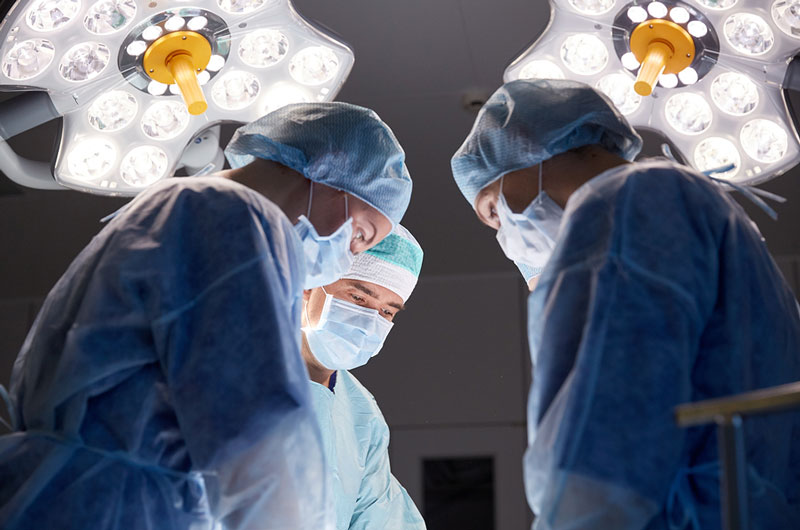An Overview
Secondary malignancies are actually cancers caused due to the treatment through radiation or chemotherapy. The cancers are not related to the primary (first) cancer that was treated earlier. The secondary cancer may occur several months or even years post initial treatment.
There are some treatments that increase overall risk of developing a second cancer. These include:
- Chemotherapy drugs etoposide
- Radiation therapy for certain lymphomas
- Childhood leukemia with radiation therapy
- Treatment involving a combination of radiation therapy and chemotherapy
Prevention measures involve avoiding the above listed treatments and also ensuring the patient does not receive too much treatment for a specific disease or that increase risk factors.
Understanding Secondary Malignancies
A secondary malignancy is a new cancer that occurs in an individual as a result of previous treatment with radiation or chemotherapy. Secondary cancers may occur months or years after treatment and are a consequence or side effect of the initial cancer treatment. For example, a patient with breast cancer or Hodgkin’s disease may develop acute leukemia years after completion of treatment for their first cancer. Many of the secondary cancers are skin cancers, such as basal cell or squamous cell carcinoma, which can be treated easily. Others, however, are more serious and can be fatal, such as acute leukemia.
Causes
In addition to treating cancer, chemotherapy drugs and radiation therapy are also carcinogenic, which means they can cause cancer. Chemotherapy destroys cancer cells by disrupting cell division. However, normal cells are also affected, especially if the dose is too high or if certain drugs are used. For example, etoposide is associated with an increased risk of acute leukemia compared to other chemotherapy drugs. Furthermore, secondary cancers are more frequent in patients who receive radiation therapy and chemotherapy compared to either treatment alone.
Secondary Cancers Post Hodgkin’s Disease
Although the cure rate for Hodgkin’s disease is very, there is also a risk of developing secondary cancer. This disease was one of the first cancers to be cured using a combination of chemotherapy and radiation therapy. A combination of chemotherapy with or without radiation therapy may be used for treatment.
Combination chemotherapy includes the following:
- Alkylating Agents – Cyclophosphamide, procarbazine, and nitrogen mustard
- Corticosteroids – Dexamethasone and prednisone
- Vinca Alkaloids – Vinblastine and vincristine
- Bleomycin
- Anthracyclines – Doxorubicin
All of the above listed agents are capable of causing secondary cancers in varying degrees. Research has revealed that patients with Hodgkin’s disease are more prone to die from second cancers than the normmal population.
Age – Those between the age of 20-30 are at increased risk of developing any second cancer. The younger the patient during initial treatment, the greater the chance of developing a second cancer. Use of radiation therapy for Hodgkin’s disease treatment also increases the risk of second cancers.
Patients with Hodgkin’s disease are at greater risk of developing acute leukemia 3 and non-Hodgkin’s lymphoma (NHL) post treatment. The risk of breast cancer is lower in patients who receive newer, combined modality treatments for the Hodgkin’s disease.
Secondary Cancers Post Breast Cancer
Most women in their early stage breast cancer are cured with following treatment:
- Alkylating agents – cyclophosphamide
- Anthracyclines – epirubicin, doxorubicin, mitoxantrone
- Antimetabolites – methotrexate, 5-FU
- Texans – Taxol®, Taxotere®
This increases the risk of secondary cancer.
Secondary Cancers Post Non-Hodgkin’s Lymphoma (NHL)
A combination of the following is used to treat patients with NHL:
- Cyclophosphamide
- Doxorubicin
- Vincristine
- Prednisone (CHOP)
This regimen cures patients with NHL. A research has revealed that around 2.75% of patients developed secondary cancers after CHOP treatment.
Secondary Cancers Post Acute Lymphoblastic Leukemia (ALL)
Over 80% of children with ALL get cured with modern treatments. However, they are also at risk of developing secondary cancers. The risk increases when the treatment is combined with radiation therapy. Research has revealed that second cancer risk increases in non-irradiated patients.
Secondary Cancers Post Testicular Cancer
Testicular cancers are usually treated with the combination of the following chemotherapy:
- Cisplastin, Etoposide, and Bleomycin (PEB)
Secondary cancer is one of the major long term complications from PEB chemotherapy. Etoposide and cisplatin makes one more vulnerable to the risk for developing leukemia in patients with testicular cancer.
The risk is associated with the dosage of etoposide administrated to the patients. It has been revealed that patients with testicular cancer treated with a combination of chemotherapy and radiation therapy are at the greatest risk of secondary cancers.
Signs and Symptoms of Secondary Malignancies
Skin is the most frequented site for a second cancer. It is most commonly the squamous or basal cell variety. These cancers are slow-growing and rarely spread. Second cancers are easier to detect and can also be successfully treated with surgery.
Patients usually experience irregularities in the skin, which should be immediately notified to the doctor. Secondary cancers may also occur in other organs with symptoms specific to that part of the body. Any unusual symptoms should be reported to the doctor without delay.
Prevention Methods
It is important to define cancer risk groups as it helps doctors determine the level of treatment given to those having a low risk of recurrence of cancer and those at high risk. Treatment with low dose for low risk groups is very crucial to prevent secondary cancers as these cancers occur more often in patients who have been intensively treated.
Here are some prevention measures that can be taken for secondary malignancies:
Avoid Radiation Therapy – This is important to reduce the incidence of second cancers. This is proven helpful for children where intrathecal (into the spinal fluid) chemotherapy is substituted for radiation therapy. These days, Hodgkin’s disease and non-Hodgkin’s lymphoma is treated with radiation therapy in combination with chemotherapy in some specific groups of patients with good success rates.
Avoid Carcinogenic Drugs – Although it is difficult to follow as all chemotherapy drugs are carcinogenic, the patient should avoid drugs with high carcinogenic potential as far as possible. Etoposide is associated with high incidences of acute myeloid leukemia and myelodysplasia. In some instances, doctors may use other drugs instead.
Treatment Procedure for Second Cancers
Early diagnosis is the most crucial aspect of treatment of secondary cancer or malignancies. Patients must understand that being at double risk of recurrence of primary cancer and a secondary cancer. Appropriate preventive care is important. The patient must also get all cancer screening programs prescribed by the medical professionals.
For instance, the Hodgkin’s disease must be initiated with mammography screening. This needs to be done at an earlier age and thereafter, annually for life. Cancer survivors must undergo regular screening for bowel cancer at an earlier age and continue it for life.
Acute leukemia has lower response rates as compared in those who develop the same abnormality sans cancer history in the past. This makes these patients immediate candidates for stem cell transplants and similar treatment procedures.




